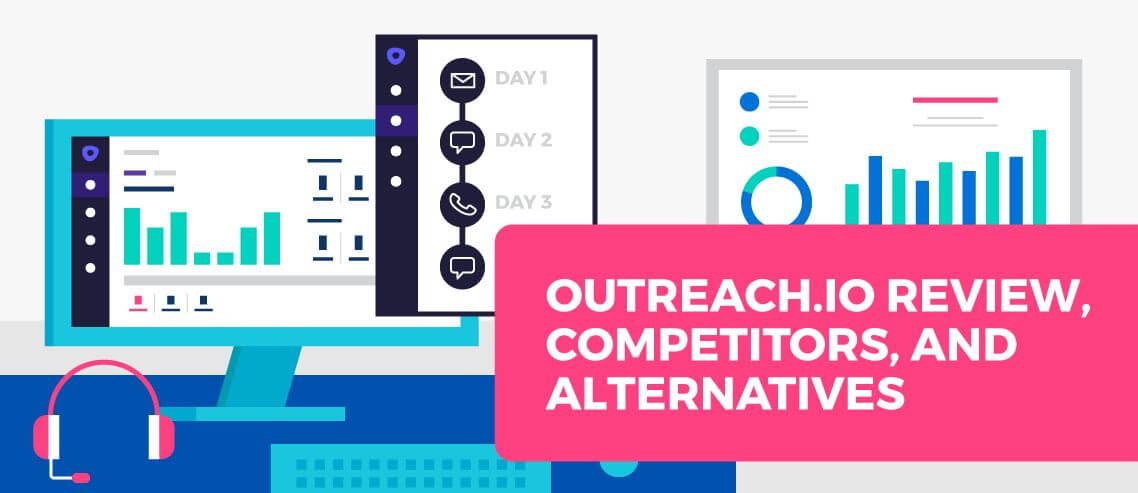How to Build a Sales Process for the 7 Stages of the Sales Cycle

Contents
What do you do when you meet someone you instantly fall in love with? You don’t immediately get on your knees, take out a ring, and propose to them.
Instead, there’s a process that begins with getting to know them – their likes and dislikes – then gradually spending more time together to see if the relationship is really meant to be.
In much the same way, when a company meets a potential new customer or lead, there’s an established process they use to convert them into a buyer. This is called the sales cycle.
What Is a Sales Cycle?
A sales cycle is a process used by companies to successfully convert leads into customers. It outlines the key steps that should be taken in order to nurture a lead and close the deal, offering a road map for all salespeople in the company.
Why Should I Have a Process for My Sales Cycle?
As a salesperson, you probably take great joy in coming up with new ideas and improvising. However, knowing and naming the steps in your sales cycle can make all the difference in your business’s success.
There are a few key benefits to knowing the steps in your sales cycle. First, you can optimize your team structure to support your sales cycle. For example, if you know your biggest challenge is finding qualified leads, you can put more team time into that stage of the sales cycle.
Secondly, having a sales cycle process makes it easy to onboard new staff. It’s an easy way to see what the short-term and long-term goals are, and how each step in the cycle supports the next.
You might also notice places where large amounts of effort are going to waste. Knowing your process lets you eliminate low ROI projects and helps your team focus on the efforts that give you the most results.
Finally, you can better pinpoint which steps in the sales cycle need improvement. You might discover that your team is excellent at generating leads but bad at making contact. Because you can pinpoint this, you can now consider offering training on how to write better emails, get past gatekeepers, and other obstacles they might face.
The Seven Stages of the Sales Cycle
- Prospecting
- Make Contact
- Qualify your prospect
- Nurture your prospect
- Present your offer
- Overcome objections
- Close the sale
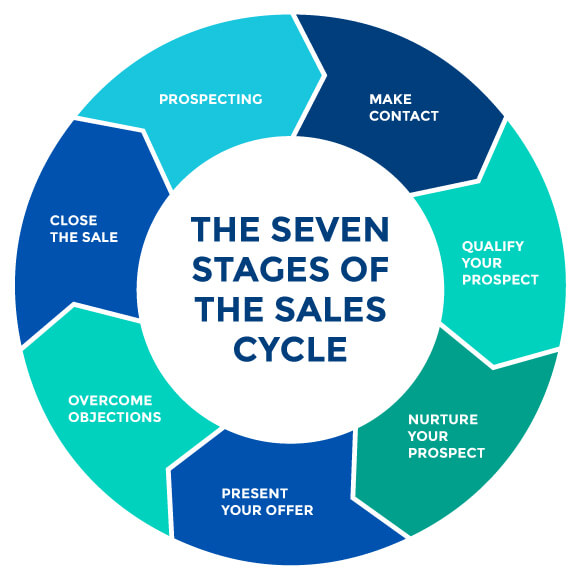
Let’s break down the seven main stages of the sales cycle: prospecting, making contact, qualifying your lead, nurturing your lead, presenting your offer, overcoming objections, and closing the sale. We’ve also included one additional bonus step that can help speed this sales cycle up.
Steps of the Sales Cycle
#1 – Prospecting: Find Your Dream Client
Prospecting is the first step in the sales process. In this stage, you might be looking at your target customer profiles, identifying potential clients for contact, and considering the best way to approach them.
Don’t rush it! Taking the time to thoroughly research your prospects is the best thing you can do to close more sales.
How do you research a sales opportunity? Let’s break this step into three stages:
1. Creating and Using an ICP
Start by creating an Ideal Customer Profile (ICP). While you may take it for granted that you know who your ideal customers are, the process of creating an ICP gives you a laser focus and can uncover new insights for your sales campaign.
It’s critical to know who you’re contacting and why.
At its most basic, your ICP will be a fictional company (based on real data) that:
- Represents companies who both offer you great value (in terms of revenue, influence, etc.) AND
- Receive great value from you (usually in terms of ROI, improved service, etc.).
You can get an idea of what goes into an ICP by taking Belkin’s online questionnaire.
2. Identifying Potential Leads
Once you have an ICP to work from, you can begin generating a database of potential leads who match that profile.
Finding those companies will depend on your specific requirements, but possibilities include social media (such as LinkedIn) and online databases (such as Crunchbase).
When you find those ideal companies, compile a list of the individual prospects at those companies for your sales team to contact and qualify.
3. Initial Qualification
Even when working from the best ICP, you’ll still need to qualify your individual prospects. Here’s an interview we did on how to qualify prospects if you’re curious, but in short, you’ll want to look for four key factors:
- Need
- Budget
- Authority
- Timing of Need
You can then look into additional qualifiers depending on your unique requirements, such as company size, growth, geography, and so on.
While you may need to speak directly with your prospect to fully qualify them, you can usually get a good indicator of these factors during your initial research phase.
#2 – Make Contact: Reach Out and Say Hello
Now that you’ve identified your dream client, it’s time to reach out and build a connection.
This stage of the sales cycle can be broken down into two distinct steps:
1. Identifying the Best Method
What’s the best way to get hold of your prospects? Maybe they’re particularly active on a specific social network, or they’re only reachable by phone. Maybe cold email is the best method, or an old-school postcard is needed to stand out from the competition.
Perhaps you’re just not sure which means of communication is right for your ICP. As a general rule, we recommend steering clear of phone calls unless you have no other option.
Studies show that 80% of phone calls go right to voicemail – and only 2% of the calls that get answered result in an appointment. Talk about slim chances!
The good news is, 78% of decision-makers say they’ve arranged an appointment or attended an event due to a cold email. Email is a great way to make direct, personalized contact with your lead.
The best time to send emails is usually between 8 am-10 am and 3 pm-4 pm. During these times, people usually aren’t at their busiest, and might be checking email to wind up or wind down.
Using social media will depend widely on the platform and your audience – but it doesn’t hurt to try. Consider pairing it with email marketing to boost your chances of making a connection.
However, in all likelihood you will use a combination of methods.
For example, you might interact with them on social media, send an email, then follow-up with a phone call. Either way, you have to remember to use the method that’s best for your client.
You may love reaching out with connection requests on LinkedIn, but if your contact is inactive, doesn’t respond to connection requests, or isn’t even on the platform, even the most original, clever outreach message may as well be smoke signals.
2. Execution
They say you only get one chance to make a good first impression. So, no pressure.
When you finally reach out, it’s important to have your objective clearly in mind. In most cases, this will not be “making a sale”. After all, would you buy anything off a complete stranger on the internet?
The higher your price point, the less likely someone is to buy from your initial outreach efforts, whatever its form. Instead, use your outreach to introduce yourself, to build trust, and ultimately start a conversation. The sale comes later.
#3 – Qualify Your Prospect: Learn About Their Goals and Challenges
Qualifying your lead is your chance to learn more about your target prospect. Work to understand their goals, challenges, budget, and other important decision-making factors. In this stage, it’s also essential to establish that you’re speaking with the right decision-maker and to identify opportunities where you can offer high value (as per your ICP).
This step is also a chance to further qualify them as a prospect and confirm whether they meet the four key criteria I set out in step #1. If you realize they wouldn’t be a good match, don’t get discouraged. It’s normal for less than 50% of initial prospects to turn out to be a good fit.
Avoid wasting time and team resources by communicating this concern to them. They’ll either appreciate your honesty, or you’ll learn a new detail about why they’re still interested in hearing more. Talking directly with a prospect is the best (and often only) way to be certain they are the right prospect for you.
#4 – Nurture Your Prospect: Be a Reliable Resource
Now it’s time to prove your relevance to your prospect. Prepare yourself to answer key questions about your unique offers and benefits, as well as what problems you can solve for them.
Based on what you learn, you can nurture your lead. Even without objections, most prospects will need some kind of nurture sequence. For example, you’ll likely need to move them along the stages of awareness, from pain aware to most aware. You’ll still need to build trust, and the best way to do that is offer consistent value.
Nurturing leads involves educating them about the general product, service, or industry, personalizing your communication, and addressing common challenges. Utilizing client retention software can help you manage and track these interactions more effectively, ensuring you maintain regular contact with prospects who aren’t ready to sign up immediately.
While nurturing, you’re working to establish a reputation for being helpful, responsive, and a reliable resource in your area of expertise.
In addition, you will likely come across prospects who are interested and otherwise qualified, but for whatever reason aren’t ready to sign up right now. In this case, it’s important to maintain regular contact — again offering valuable help — to stay top of mind. When they are ready to buy, you’ll be the first person they think of.
In this stage, or possibly in stage three, you might even learn that your prospect wants a product or service urgently. Once you get to this point, it’s best to move on to stage five.
#5 – Present Your Offer: Provide Them a Solution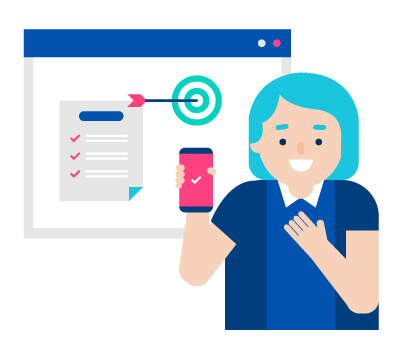
So far, the cycle has focused on your prospect. You’ve met them where they are, learned about their needs, and educated them on their questions and concerns.
It’s time to take all that knowledge and present the best possible offer you can.
Keep your offer relevant, targeted, and personalized to the needs you previously discussed. Connect your offer to their challenges, budget, and long-term ambitions. Finally, think about creative ways you can present and package your offer.
#6 – Overcome Objections: Justify How Your Offer Is Their Best Option
You’ve provided information, support, and even given your best possible offer. Now, the ball is in your prospect’s court. Usually, they return with an objection to your offer. The most common objections include price vs. value, risk, content of the offer, contract terms, and more.
If you can, it’s best to try to handle these objections early, like in the nurturing phase. But sometimes it’s just not possible to handle them ahead of time.
When you respond, be patient and empathize with their concerns. No one responds well to being rushed or pressured.
Make sure that you handle objections that relate to each other, as well. For example, if your lead is concerned with price, make sure they understand exactly what’s included in your offer.
Once you’ve offered an explanation, ask them to confirm that you’ve handled their objection.
However, in some scenarios these objections won’t be explicitly stated, meaning you’ll need to learn to read between the lines. “We’re not interested” might mean they’ve tried similar services before and been let down, and are worried about that happening again.
Familiarizing yourself with general objections will help. But to get to the real root of the objection, you’ll often have to ask more questions. Once you’ve asked a question, remember to listen carefully to their answer rather than preparing what you’re going to say next.
Once all objections are handled, you can move into the final stage.
#7 – Close the Sale: Thanks for Doing Business
So you’ve done a great job and you didn’t let them see you sweat. It’s time for the final stage of the sales cyle: closing the sale.
There are two separate parts to this step:
1. Sealing the Deal
If the prospect matches your ICP, you’ve reached out in a way that suits them, and you’ve demonstrated value, then hopefully they’ll be eager to buy.
You should never feel the need to “trick” them into buying, but even a perfect prospect may require a nudge before making their decision. You can’t rely on them closing themselves.
The key is to make it easy for them to say “yes”.
Closing the sale not only confirms their engagement, but also works to set up next steps. At this time, you can ask for a starting date or offer an extra benefit if they sign today.
It might be counterintuitive, but avoid offering discounts – studies show that this can decrease the odds of successfully closing a sale by 17%.
Closing is also an opportunity to remind them of a specific result you believe you can achieve for their business. However you choose to do it, feel free to be a little creative. There are a variety of great ways to close the sale, ranging from indirect (“Are you happy with the features in this particular package?”) to the direct (“Would you like to go ahead and sign up now?”).
You can also introduce other factors, such as:
- Urgency/scarcity (“The price goes up at midnight”)
- Offering incentives
- Including a free trial (“Why not try it out for a week and see how you get on?”)
For example, at Belkins, the team is very confident in its ability to consistently deliver qualified leads to our clients over time, so they don’t lock companies in with a minimum engagement period of three or six months, allowing them to pay as they go month-by-month. This policy helps them to close more business than their competitors, since clients don’t feel obligated to a long-term contract from the first month.
If, after all this, the prospect still seems hesitant, it’s often best to simply ask them what else they’d need to know to make a decision.
Once you’ve closed the deal and gotten their commitment, stick around to answer any remaining questions and provide them with clear next steps.
If you’re having an in-person meeting, offer to send a summary email to them and their assistant or superior that reviews your conversation and agreement.
2. Follow-Up
Finally, even with your best efforts, factors outside your (or the prospect’s) control may mean the answer is “Not yet.”
In this case, the best thing you can do is add them to a nurture campaign (see above), regularly following up with any prospects who aren’t yet ready to say yes.
You could also use this as an opportunity to reach out to additional contacts within the same company.
Best Practices for Creating Your Sales Process
Rex Bibertson, founder of LeadCar and author of Outbound Sales No Fluff, shares his 4 best practices for creating your own sales process.
Sales is a combination of science and art: you have to solve a basic formula in a way that wows your prospects. I’ve consulted dozens of startups all trying to master this critical pairing, and it’s not easy.
Fortunately, the perfect sales process is not some elusive dream. It can be built. It just might surprise you how it gets built (hint: it has a lot more to do with what your ideal customer needs to experience than whatever you think you need to do). Although tools such as CRM let you automate parts of the sales process, it is the human touch points in your sales process that matter the most.
Start with the customer in mind, not the tools
Sales technology has gotten so advanced that we are starting to forget that a critical rule: Our tools shouldn’t dictate our processes — our processes should dictate our tools.
When you’re planning out your process, don’t worry about what software you’ve already bought. These days you can make most tools do what you need them to.
Start with your customer in mind. Think about the mindset they have before they learn about your product:
- What are the problems they’re experiencing and how are they trying to solve them today?
- What changes need to happen in their knowledge and attitude toward your product for a sale to happen?
Then design the steps you take around the path they must follow
Here’s an example (written from the perspective of the customer):
- I have a problem with X that I’m willing to pay to solve
- I’m currently trying Y solution, but it’s (a) ineffective (b) overpriced [these should be based on your competitive product advantages]
- I learn about Product and wonder if it’s worth replacing what I’m doing now.
- I talk to a sales rep and can tell this company knows a lot about the problem.
- The rep makes me feel like she understands exactly what I’m struggling with and what to do about it.
- I find out the necessary details to make a decision and am starting to feel more confident that this solution can help me.
- The sales rep provides ample evidence of companies like mine that have found the benefits I’m looking for. I feel much more confident and can now explain to my team why we are making this transition.
- The buying process is easy and next steps are clear all along the way.
- I sign up and immediately am made to feel that my decision was right.
How much better is this as a starting point than: “Day 1: Email + Call. Day 2: Call and leave VM”
We’ll get there eventually, but the detailed steps aren’t important unless they take your future customer on the right path.
Map your actions to the customer’s journey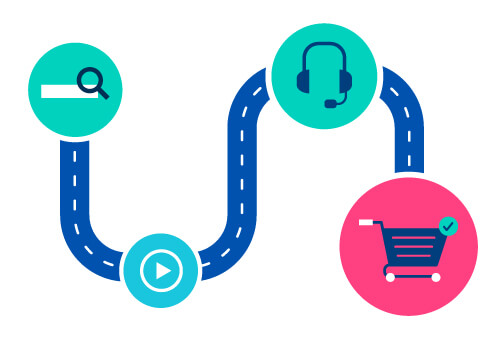
Personally, I use Lucidchart for all my process mapping. They make it insanely easy for me to create and share ideas (plus I just LOVE their brand)
Next to each step the customer needs to go through, write the corresponding actions you need to take to ensure the customer can take those steps.
Here’s an example from the customer journey I mentioned above:
- The rep makes me feel like she understands exactly what I’m struggling with and what to do about it.
- Need a discovery call framework that highlights the problem with statistics and high value questions that dig into the problem.
- Customer stories that highlight each variation of the problem we solve.
- To ensure sales reps have all relevant data on the company ahead of the call so time is spent on valuable questions, not time wasters.
- To teach reps to actively listen. If we see reps struggling because they’re taking too many notes to really be present, we can put a call recording & transcribing tool in place so they can focus and get notes logged afterward.
- To help the customer feel like they’re getting personal engagement and all of our attention, we will use a video conferencing tool to show our reps’ faces (even if the client doesn’t turn on their camera).
Look at how much can be developed based on what the prospect needs to feel. Ditch the “best practices” – do what’s best by the customer.
Map your actions to the tools needed to execute them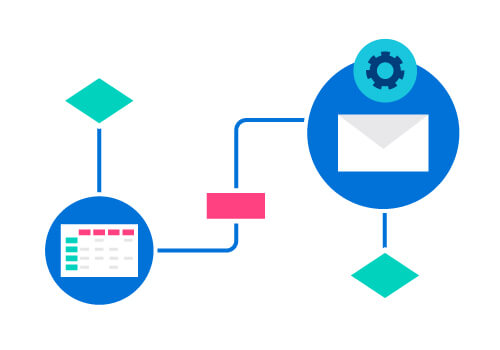
At this point you know what you need to do. Now you need to develop how to do it.
For example, if I need to design and distribute a discovery call framework, I have a few options:
- Add custom fields to my contact record in CRM based on necessary data to uncover during discovery
- Create a form for the rep to fill out while on the call (like a Google form)
- Generate a document outlining the questions to ask and have reps keep call notes
- Any combination of the above solutions
It’s finally time to start thinking about your own team and not your customer. Here are four questions to consider when developing each step in the process:
- Does this step contribute to helping our prospective customer make the right decision?
- Is this step adding any unnecessary complexity?
- Do we need to buy or implement a new tool to execute on this step?
- If we need a new tool, will the sales reps integrate it into their workflow?
Measure and improve over time
If you think you’ll be able to design the perfect sales process right out of the gates, you’re setting yourself up for failure.
You should track your sales funnel metrics before implementing new changes, then after the change is implemented. This way you can make a decision based on real data, not feelings, about how a particular step in your process is affecting your sales output.
Here’s a list of some metrics you’ll want to track:
- Dial to connect rate
i.e. Out of your call attempts, how many conversations are you having with the intended contact? - Positive email response rate
i.e. Out of the emails you’re sending, how many prospects respond positively? - Conversion rate
i.e. Out of your first conversations, how many convert to a next sales conversation (meeting/demo)? - Sales accepted rate
i.e. Out of your next sales conversations, how many become a qualified sales opportunity? - Close rate
i.e. Out of your qualified sales opportunities, how many become a customer?
How to Improve Your Sales Cycle
To finish things off, you should always have an eye on what you could be doing to improve your sales process.
According to Dale Dupree of The Sales Rebellion, there are 3 places you should invest your time to do that:
- Mindset
- Prospecting
- Pipeline
Dale has 3 recommendations in each discipline to up your game.
1. Mindset
Take 30–60 minutes in the morning and invest it in yourself.
We often live lives that are subject to our circumstances. In most cases, this is a choice we make. It is rare for people to take control of their surroundings and cultivate an environment that facilitates success. Setting aside time for you, preferably in the morning, is the first step in being able to make your life what you want it to be. Remember, the morning sets up the rest of your day.
Use your lunch break to connect with people on a deeper, more meaningful level.
In essence, we are telling you to never eat lunch alone. Sales is an emotional rollercoaster. A community mindset and the action fellowship will help to keep you grounded in reality and focused on the bigger picture behind your goals. What better time to recharge and continue to build alliances than over lunch? It’s a classic way to bring people together.
Educate yourself in a subject that you love.
This is not work. It’s about having a passion for something, even if it is not what you do for a living. This is the practice of intentionally observing what is important to those you are looking to serve. Whether it’s a better understanding of your product, your prospect’s entire business ecosystem, or topics that might be outside of your scope of work. People will be attracted to your enthusiasm and knowledge. Be willing to learn. Be willing to share it.
2. Prospecting
Start integrating your story into your sales pitch
The purpose of a story is to ignite the brain and make people engage with you from a different point of reference. Make your story relevant to your prospect and the pains they’re experiencing that you can relieve. It should be meaningful for the conversation you’re having. Make it blur the line between personal and professional personas. You are not separate from your 9–5, make sure people know it.
Listen more than you speak
In other words, build your active listening skills and seek to read between the lines. What you see may not be what’s really going on. For example, “not interested” can mean a host of different things, none of which legitimately means “not interested.” People use common phrases like this one to move the conversation in the direction they want. Look to discover the real meaning behind people’s words.
Use a first touch piece
It’s the 21st century. There is no need to call a prospect who is so cold, they could give you frostbite. Utilize a pre-contact strategy that will create a sense of curiosity in your prospect before you ever reach out to them. But be aware: A brochure or flyer doesn’t count. Everybody sends those; they end up in the trash. Create a marketing piece that expresses your personality and unique value while empowering your sales goals. Then, send it to them before you ever call.
3. Pipeline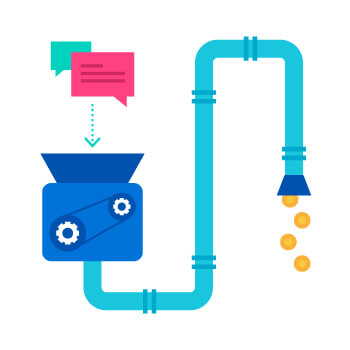
Redefine your territory/list
Know that your territory/list is more than just a source of potential opportunity. It is a representation of many different people, and these people are tired of being treated as a means to an end. Be a champion to your community and a protector of your prospect’s interests. Drop the agenda and look to truly serve. Then watch the opportunities grow.
Create a hybrid outlook
Too many salespeople focus on the short term and forfeit opportunities that have not yet come to fruition. Create a five-year outlook. Who’s going to be your client three, four, and five years from now? Create a 2-year campaign that has quarterly touchpoints. The aim should be to build a relationship with this prospect not to show them the latest offer for 20% off. By taking this approach, you will win business sooner than it is “up” while cultivating a much healthier 30/60/90 day funnel.
Build community
This is the Jedi move for your long game. This is about recognizing that your value proposition is you and your ability to bring people together, solve problems, and give back. All of these actions build your reputation — a highly overlooked piece of the puzzle for long-term sales success. Start building a reputation you can be proud of and your prospects feel honored by.
How to Build a Sales Process FAQs
What are the 7 steps of the sales cycle?
The 7 steps of a sales cycle are: prospecting, making contact, qualifying your prospects, nurturing your prospect, presenting your offer, overcoming objections, and finally closing the sale.
Which step is the most important to the sales cycle?
Qualifying your prospects is perhaps the most important step in the 7-step sales cycle. This is because it helps you identify and target the right potential customers, as well as understand their needs more deeply.
Why build a sales cycle?
A sales cycle gives your salespeople a roadmap to follow when selling. This helps them stay organized and focused, which can lead to more successful conversions more quickly.
What is sales cycle management?
Sales cycle management is the process of tracking and managing each stage of your sales cycle to ensure that all leads are nurtured and converted into paying customers. This involves defining KPIs, tracking progress through each step, and making changes as needed to optimize the process.




